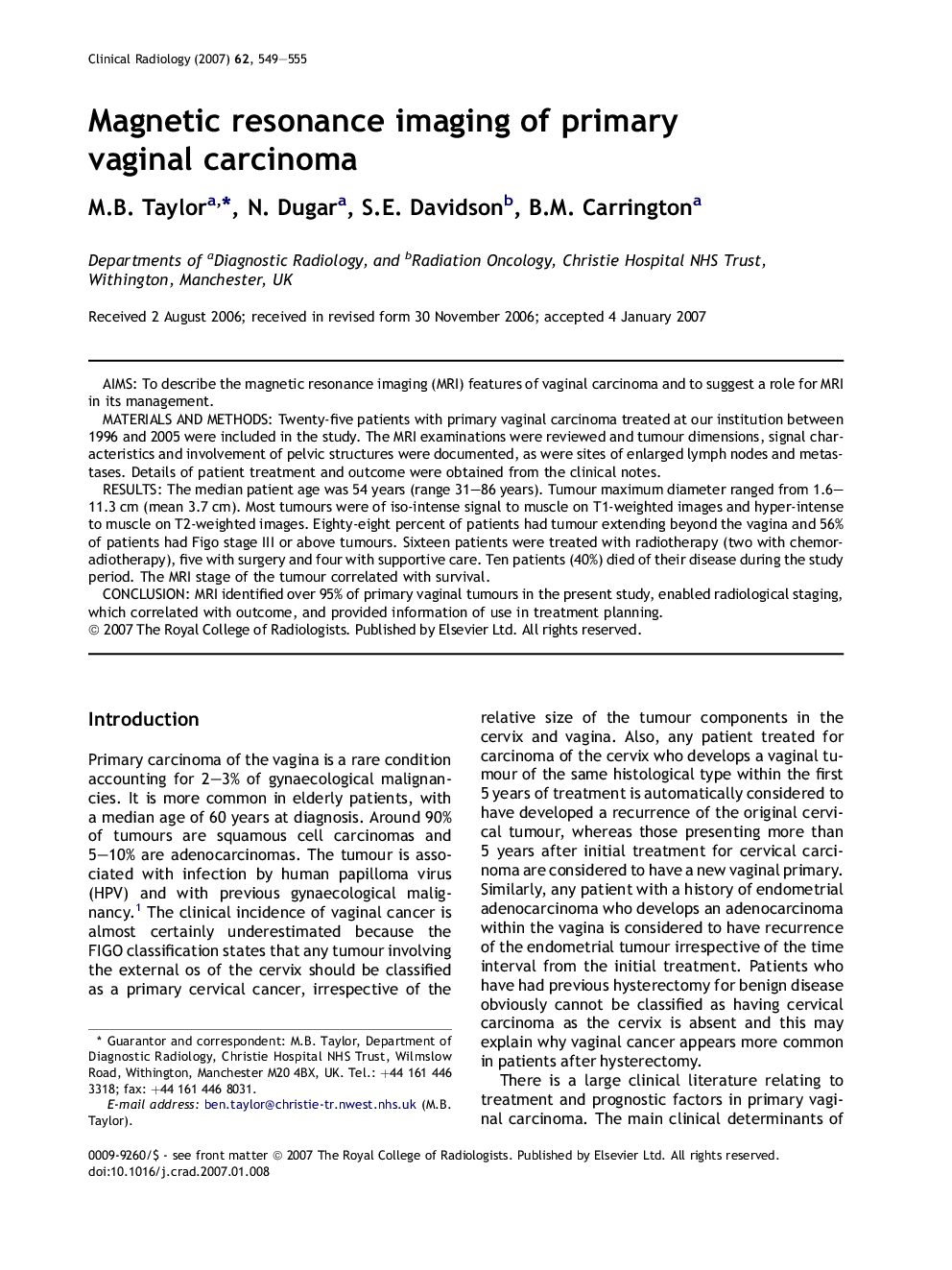| Article ID | Journal | Published Year | Pages | File Type |
|---|---|---|---|---|
| 3984298 | Clinical Radiology | 2007 | 7 Pages |
AimsTo describe the magnetic resonance imaging (MRI) features of vaginal carcinoma and to suggest a role for MRI in its management.Materials and methodsTwenty-five patients with primary vaginal carcinoma treated at our institution between 1996 and 2005 were included in the study. The MRI examinations were reviewed and tumour dimensions, signal characteristics and involvement of pelvic structures were documented, as were sites of enlarged lymph nodes and metastases. Details of patient treatment and outcome were obtained from the clinical notes.ResultsThe median patient age was 54 years (range 31–86 years). Tumour maximum diameter ranged from 1.6–11.3 cm (mean 3.7 cm). Most tumours were of iso-intense signal to muscle on T1-weighted images and hyper-intense to muscle on T2-weighted images. Eighty-eight percent of patients had tumour extending beyond the vagina and 56% of patients had Figo stage III or above tumours. Sixteen patients were treated with radiotherapy (two with chemoradiotherapy), five with surgery and four with supportive care. Ten patients (40%) died of their disease during the study period. The MRI stage of the tumour correlated with survival.ConclusionMRI identified over 95% of primary vaginal tumours in the present study, enabled radiological staging, which correlated with outcome, and provided information of use in treatment planning.
